Us and them: On responses to the environment and our proximity to the other
Essay commissioned for the Catalogue of the 22 Bienal de Arte Paiz, Guatemala
22 Bienal de Arte Paiz: Lost. In Between. Together, 2021, curated by Alexia Tala and Gabriel Rodríguez



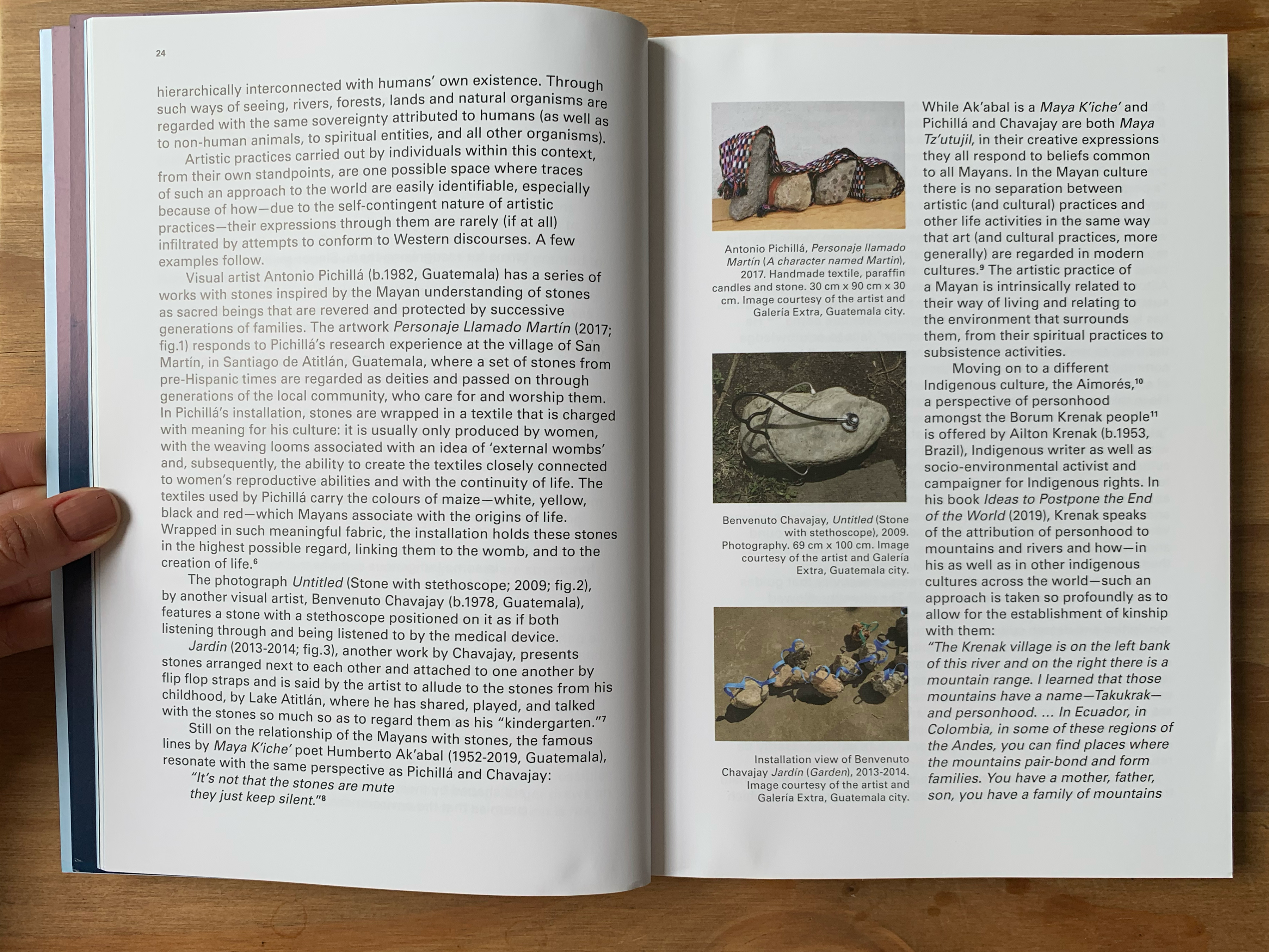

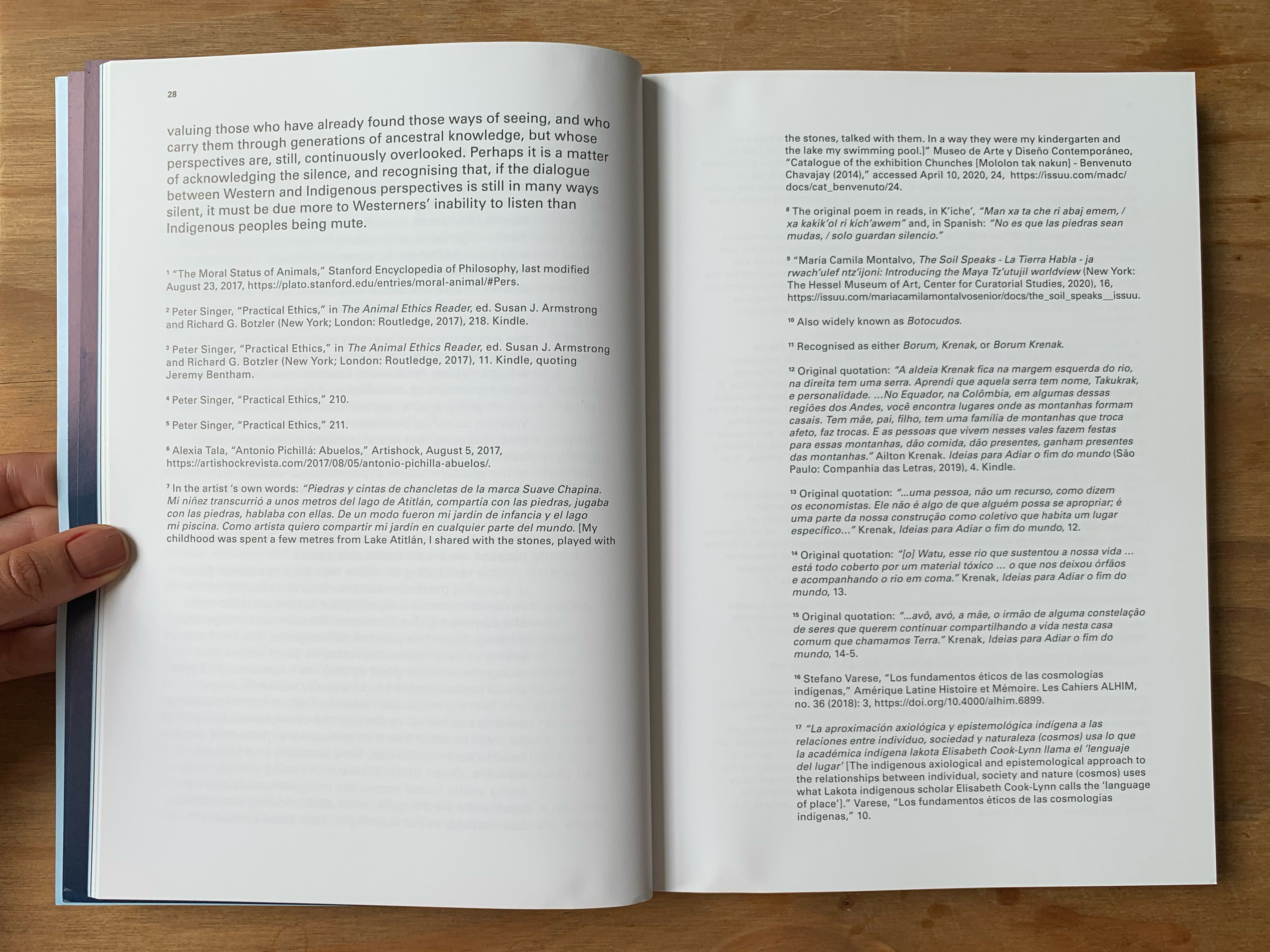

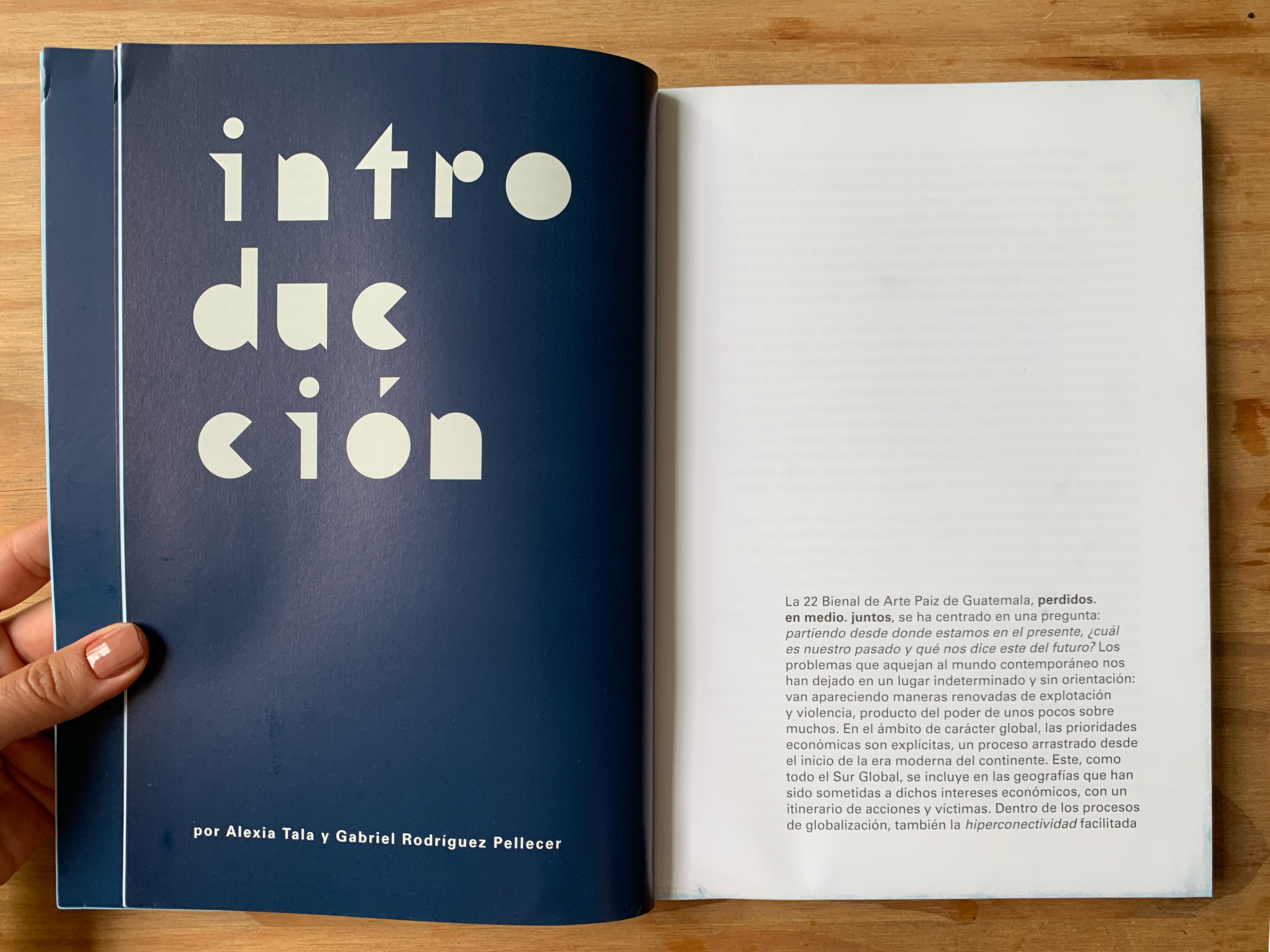
No one in a healthy state of mind doubts their own status as a person. But how similar to ourselves are we willing to allow the other to be? The criteria chosen to grant the status of personhood to beings other than ourselves can help reveal how a culture relates to the world around it.
In Western societies, the attribution of personhood tends to bring along a set of generally agreed-on attributions of moral consideration: once a certain existence is agreed to be a person, there is a general agreement on the basic treatment this particular being ought to receive. Moral consideration, in turn, plays a role in determining some of the terms under which humans treat the environment: whether a being or biome is ‘worthy of moral consideration’ affects the treatment it will get.
When reflecting on the connections between personhood, subjects of moral consideration and the moral consideration attributed to the world around us, two overarching perspectives can offer an iconic contrast: whilst the Western approach to personhood mirrors its anthropocentrism, the Indigenous may well offer perspectives of less human-centred ways of perceiving the world and relating to it.
In the context of environmental discussions, the problems of attribution of personhood are often addressed in discussions concerning animal ethics. Approximating non-human animals to the status of personhood, it turns out, highlights the necessity to extend to other beings the level of moral concern usually granted to humans only - helping to advance the animal rights agenda across public and legal spheres. Following this same logic, it is possible to envisage that, if the notion of personhood in Western cultures was to be revisited and expanded, some important shift in discourses and public opinion might occur which would contribute substantially to political and legal advancements of the environmentalist agenda more broadly.
For Kant, what defines a person is the autonomy enabled by their ability to reason, and it is personhood that “makes a being valuable and thus morally considerable.”1 Following his theory, personhood is not strictly tied to humanity - possibly extendable to animals whose cognitive capacities are proved sufficiently sophisticated. However, it would just not cover the entire humanity either - preventing, for instance, babies and cognitively disabled adults from being considered persons, and more gravely, subsequently being denied moral consideration.
On more contemporary definitions, Sue Donaldson and Will Kymlicka, as well as Peter Singer – whose arguments are structured for their particular aim of defending animal rights – argue that personhood should be granted on the basis of sentience or consciousness, since these lead to subjective existence.
As specified by Singer, the criteria in question for considering a being a subject of moral concern points to their sentience, combined with enough cognitive abilities to allow them to sense their own existence to the extent that it leads to the elaborations of interests – of their own as well as for their own future.2 However, these criteria currently in question seem to exclude the possibility of extending such regard to non-animal organisms, as the criterion of ‘elaboration of interests’ (as we understand them) highlights.
On the very discussion of moral concern alone, it is also possible to identify the use of other terms that can be limiting. Singer draws on philosopher Jeremy Bentham’s statement that “The question is not, Can they reason? Can they talk? But, instead, Can they suffer?”3, to support a position that does not argue for the protection of humans for the sake of being humans (speciesism), whilst remaining careful not to leave behind small children and cognitively disabled adults (which would constitute ableism). However, Singer’s view is also a utilitarian one and, in aiming for the most useful or beneficial, it will necessarily be founded on humans’ interests, insofar as it can only be able to measure usefulness and benefits under the very human terms for recognising them. Singer says that “It would be nonsense to say that it was not in the interests of a stone to be kicked along the road by a schoolboy. A stone does not have interests because it cannot suffer… A mouse, on the other hand, does have an interest in not being tormented, because mice will suffer if they are treated in this way.”4 In Singer’s own words, “If a being is not capable of suffering, or of experiencing enjoyment or happiness, there is nothing to be taken into account.”5
While Singer’s argument is valid for the defence that animal suffering should be avoided, this comment evinces how the entire argument is structured on a human-centred foundation, in which the defence of interests that lead to avoiding suffering fails to consider the possible existence of a wider system which also has interests of its own. This wider system's interest, in turn, may differ from the human experience of interest as we, humans, know it.
In some Indigenous cultures the notion of sentience is such that it embraces non-animal beings and natural elements more generally – including those which Western cultures simply treat as ‘resources’. Back to the issue of personhood, indigenous perspectives offer a very different way of responding to this notion, just as they have an entirely different way of responding to the environment around them. Indeed for Indigenous peoples, ‘responding to’ or ‘interacting with’ is a bad way of putting it: better to say ‘belonging to’ the environment around them.
In the Indigenous cultures, the ethical frames that determine their relationship to the environment are shaped by their cosmovision, stemming from the premise that the environment is intrinsically and non-hierarchically interconnected with humans’ own existence. Through such ways of seeing, rivers, forests, lands and natural organisms are regarded with the same sovereignty attributed to humans (as well as to non-human animals, to spiritual entities, and all other organisms).
Artistic practices carried out by individuals within this context, from their own standpoints, are one possible space where traces of such an approach to the world are easily identifiable, especially because of how – due to the self-contingent nature of artistic practices – their expressions through them are rarely (if at all) infiltrated by attempts to conform to Western discourses. A few examples follow.
Visual artist Antonio Pichillá (b.1982, Guatemala) has a series of works with stones inspired by the Mayan understanding of stones as sacred beings that are revered and protected by successive generations of families. The artwork Personaje Llamado Martín (2017; fig.1) responds to Pichillá’s research experience at the village of San Martín, in Santiago de Atitlán, Guatemala, where a set of stones from pre-Hispanic times are regarded as deities and passed on through generations of the local community, who care for and worship them. In Pichillá’s installation, stones are wrapped in a textile that is charged with meaning for his culture: it is usually only produced by women, with the weaving looms associated with an idea of ‘external wombs’ and, subsequently, the ability to create the textiles closely connected to women's reproductive abilities and with the continuity of life. The textiles used by Pichillá carry the colours of maize – white, yellow, black and red – which Mayans associate with the origins of life. Wrapped in such meaningful fabric, the installation holds these stones in the highest possible regard, linking them to the womb, and to the creation of life.6

The photograph Untitled (Stone with stethoscope; 2009; fig.2), by another visual artist, Benvenuto Chavajay (b.1978, Guatemala), features a stone with a stethoscope positioned on it as if both listening through and being listened to by the medical device.
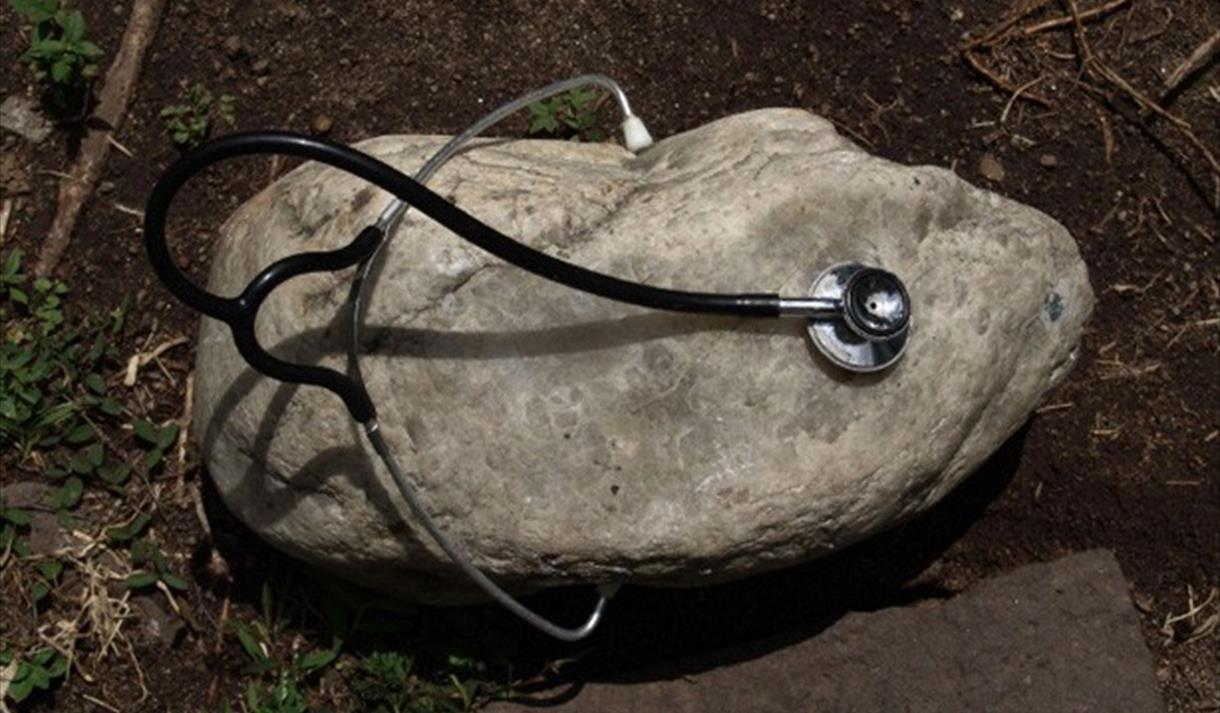
Jardin (2013-2014; fig.3), another work by Chavajay, presents stones arranged next to each other and attached to one another by flip flop straps and is said by the artist to allude to the stones from his childhood, by Lake Atitlán, where he has shared, played, and talked with the stones so much so as to regard them as his “kindergarten”.7
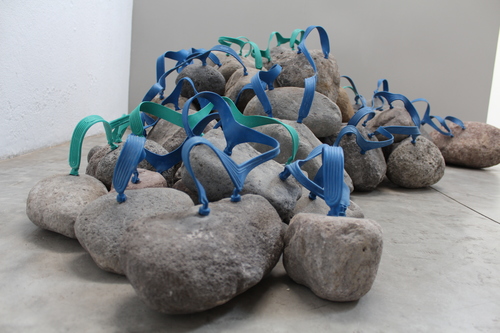
Still on the relationship of the Mayans with stones, the famous lines by Maya Kʼicheʼ poet Humberto Ak’abal (1952-2019, Guatemala), resonates with the same perspective as Pichillá and Chavajay:
“It's not that the stones are mute
they just keep silent.”8
While Ak’abal is Maya Kʼicheʼ and Pichillá and Chavajay are both Maya Tz'utujil, in their creative expressions they all respond to beliefs common to all Mayans. In the Mayan culture there is no separation between artistic (and cultural) practices and other life activities in the same way that art (and cultural practices, more generally) are regarded in modern cultures.9 The artistic practice of a Mayan is intrinsically related to their way of living and relating to the environment that surrounds them, from their spiritual practices to subsistence activities.
Moving on to a different Indigenous culture, the Aimorés,10 a perspective of personhood amongst the Borum Krenak people11 is offered by Ailton Krenak (b.1953, Brazil), Indigenous writer as well as socio-environmental activist and campaigner for Indigenous rights. In his book Ideas to Postpone the End of the World (2019), Krenak speaks of the attribution of personhood to mountains and rivers and how – in his as well as in other indigenous cultures across the world – such an approach is taken so profoundly as to allow for the establishment of kinship with them:
“The Krenak village is on the left bank of this river and on the right there is a mountain range. I learned that those mountains have a name – Takukrak – and personhood. … In Ecuador, in Colombia, in some of these regions of the Andes, you can find places where the mountains pair-bond and form families. You have a mother, father, son, you have a family of mountains that exchange affection, that make exchanges. And the people who live in these valleys throw parties for these mountains, offer them food, offer them gifts, and receive gifts from the mountains.”12
The Krenak people in particular, have a river as their grandfather: the Doce River, which they call Watu, of which Ailton Krenak speaks as “a person, not a resource, as economists say. He is not something that anyone can own or appropriate; he is a part of our construction as a collective that dwells in a specific place...”13 In 2015, the Krenak’s Watu was affected by an environmental crime, when a dam, owned by the multinationals Vale and BHP Billiton, burst, spewing about 45 million cubic metres of iron mining waste into the region. In this context, Ailton Krenak described that “Watu, the river that has nourished and sustained our life … finds himself today sunk under toxic mud … which has left us orphaned and accompanying the river in a coma.”14 He goes on to criticise that so-called “humanity” fails to acknowledge the river, as well as mountains elsewhere – which are all being commodified – , as “... the grandfather, grandmother, mother, brother of some other constellation of beings who want to continue sharing life in this communal home we call Earth.”15
As anthropologist Stefano Varese explains, indigenous peoples’ “place, space, memory, language and above all the relational dialogue with all the organisms of the world are constituted in the ‘inhabited culture’ which is always expressed in the ‘language of place’."16 This term defines the close proximity of the Indigenous systems of value and knowledge to their relationships between individuals, society and nature.17 This unique way of understanding their space, explains Varese, ensures that calculative knowledge does not gain ground and, remaining rooted in the landscape, that they do not distance themselves intellectually or emotionally from it.18
Two other notions are key for the interconnectivity that guides cosmovisions: plurality and reciprocity.19 The plurality allowed by cosmovisions opposes Western views that compartmentalise specialties and detach culture from nature; and the notion of reciprocity opposes the Western exploitative approach to nature as resource. The diversity privileged across indigenous cultures is established primarily by the refusal to place humankind at the centre and to take human perspectives as universal. When humans are not seen as in any way superior or separated from nature, there is clarity on how reciprocal their interactions ought to be: there is an understanding that what is taken from nature will necessarily be returned in some way.
In the capitalist system, calculative intelligence, this is, a rationale that seeks results, is privileged over a contemplative rationale, which seeks meaning, and - radically opposed to the logic of reciprocity - a logic of commodification is imposed on nature.20 Since the emotional and spiritual identification of Indigenous peoples with their territorial landscape is the most fundamental element in the constitution of their identities, this commodification is especially harmful for them: allowing for such predatory behaviour harms organisms with whom Indigenous peoples have a degree of kinship. As Varese accurately points out, a reified universe dismisses ethical consideration, spiritual attention, and emotional empathies, being reduced to its use and abuse for individual gain.21 On the same notion, Krenak adds: “When we depersonalise the river, the mountain, when we strip them of their senses by considering this to be an attribute exclusive to humans, we open space for them to become mere resources and waste products of industrial and extractivist activity.”22
Arguing against personhood as it is understood in Western cultures, Donaldson and Kymlicka emphasise how accepting that moral considerations (and, thus, basic rights) be grounded on the basis of the possession of the Western notion of personhood would mean “to render human rights insecure for everyone …[and to] defeat the purpose of human rights, which is precisely to provide security for vulnerable selves,” reminding us further that “we are all entitled to basic human rights because we are all vulnerable selves.”23
It is reassuring to notice that the importance given to pursuing practices that prioritise the security of the vulnerable seems to open space for the establishment of a common ground between Western and Indigenous thinking. From this point of convergence, the next step seems to be to expand horizons so as to rethink and recognise how, for good or bad, we organisms on Earth are all interconnected in an equally vulnerable way.
There is no doubt however, that, in order to expand beyond the animal realm into the environmental realm in its entirety, other forms of subjective experiences would need to be embraced as, first, possible, and second, valuable. Given that such ways of seeing already exist – being vastly found across the Indigenous cultures – it seems like the struggle is not about finding alternatives, but, instead, about starting to ‘take them seriously’24 – valuing those who have already found those ways of seeing, and who carry them through generations of ancestral knowledge, but whose perspectives are, still, continuously overlooked. Perhaps it is a matter of acknowledging the silence, and recognising that, if the dialogue between Western and Indigenous perspectives is still in many ways silent, it must be due more to Westerners’ inability to listen than Indigenous peoples being mute.
Leer en Español • coming soon

Footnotes
1. “The Moral Status of Animals,” Stanford Encyclopedia of Philosophy, last modified August 23, 2017, https://plato.stanford.edu/entries/moral-animal/#Pers.
2. Peter Singer, “Practical Ethics,” in The Animal Ethics Reader, ed. Susan J. Armstrong and Richard G. Botzler (New York; London: Routledge, 2017), 218. Kindle.
3. Peter Singer, “Practical Ethics,” 11.
4. Peter Singer, “Practical Ethics,” 210.
5. Peter Singer, “Practical Ethics,” 211.
6. Alexia Tala, “Antonio Pichillá: Abuelos,” Artishock, August 5, 2017, https://artishockrevista.com/2017/08/05/antonio-pichilla-abuelos/.
7. In the artist 's own words: “Piedras y cintas de chancletas de la marca Suave Chapina. Mi niñez transcurrió a unos metros del lago de Atitlán, compartía con las piedras, jugaba con las piedras, hablaba con ellas. De un modo fueron mi jardín de infancia y el lago mi piscina. Como artista quiero compartir mi jardín en cualquier parte del mundo. [My childhood was spent a few metres from Lake Atitlán, I shared with the stones, played with the stones, talked with them. In a way they were my kindergarten and the lake my swimming pool.]” Museo de Arte y Diseño Contemporáneo, “Catalogue of the exhibition Chunches [Mololon tak nakun] - Benvenuto Chavajay (2014),” accessed April 10, 2020, 24, https://issuu.com/madc/docs/cat_benvenuto/24.
8. The original poem in reads, in Kʼicheʼ, “Man xa ta che ri abaj emem, / xa kakik’ol ri kich’awem” and, in Spanish: “No es que las piedras sean mudas, / solo guardan silencio.”
9. “María Camila Montalvo, The Soil Speaks - La Tierra Habla - ja rwach’ulef ntz’ijoni: Introducing the Maya Tz’utujil worldview (New York: The Hessel Museum of Art, Center for Curatorial Studies, 2020), 16, https://issuu.com/mariacamilamontalvosenior/docs/the_soil_speaks__issuu.
10. Also widely known as Botocudos.
11. Recognised as either Borum, Krenak, or Borum Krenak.
12. Original quotation: “A aldeia Krenak fica na margem esquerda do rio, na direita tem uma serra. Aprendi que aquela serra tem nome, Takukrak, e personalidade. …No Equador, na Colômbia, em algumas dessas regiões dos Andes, você encontra lugares onde as montanhas formam casais. Tem mãe, pai, filho, tem uma família de montanhas que troca afeto, faz trocas. E as pessoas que vivem nesses vales fazem festas para essas montanhas, dão comida, dão presentes, ganham presentes das montanhas.” Ailton Krenak. Ideias para Adiar o fim do mundo (São Paulo: Companhia das Letras, 2019), 4. Kindle.
13. Original quotation: “...uma pessoa, não um recurso, como dizem os economistas. Ele não é algo de que alguém possa se apropriar; é uma parte da nossa construção como coletivo que habita um lugar específico…” Krenak, Ideias para Adiar o fim do mundo, 12.
14. Original quotation: “[o] Watu, esse rio que sustentou a nossa vida … está todo coberto por um material tóxico … o que nos deixou órfãos e acompanhando o rio em coma.” Krenak, Ideias para Adiar o fim do mundo, 13.
15. Original quotation: “...avô, avó, a mãe, o irmão de alguma constelação de seres que querem continuar compartilhando a vida nesta casa comum que chamamos Terra.” Krenak, Ideias para Adiar o fim do mundo, 14-5.
16. Stefano Varese, “Los fundamentos éticos de las cosmologías indígenas,” Amérique Latine Histoire et Mémoire. Les Cahiers ALHIM, no. 36 (2018): 3, https://doi.org/10.4000/alhim.6899.
17. “La aproximación axiológica y epistemológica indígena a las relaciones entre individuo, sociedad y naturaleza (cosmos) usa lo que la académica indígena lakota Elisabeth Cook-Lynn llama el ‘lenguaje del lugar’ [The indigenous axiological and epistemological approach to the relationships between individual, society and nature (cosmos) uses what Lakota indigenous scholar Elisabeth Cook-Lynn calls the ‘language of place’].” Varese, “Los fundamentos éticos de las cosmologías indígenas,” 10.
18. Original quotation: “Es a este enraizamiento profundo y antiguo en el paisaje y en el lugar, siempre construidos y reconstruidos en las relaciones humanas con toda la compleja red bío-física,que los Pueblos Indígenas se remiten en sus reclamos territoriales y en su modo único de entender su espacio, de conocerlo de manera íntima, de no distanciarse intelectual y emocionalmente de él en ejercicios de conocimiento calculador, sino apropiándose y dejándose apropiar por él.” Varese, “Los fundamentos éticos de las cosmologías indígenas,” 15.
19. “Nuestra propuesta analítica sostiene que para los pueblos indígenas los principios de diversidad (bio-cultural), reciprocidad (social y cósmica) y complementariedad, han constituido durante milenios la estructura axiológica, ética y epistemológica de sus proyectos de civilización. [Our analytical proposal argues that for indigenous peoples the principles of diversity (bio-cultural), reciprocity (social and cosmic) and complementarity have for millennia constituted the axiological, ethical and epistemological structure of their civilisation projects.]” Varese, “Los fundamentos éticos de las cosmologías indígenas,” 11.
20. “Lévi-Strauss, de hecho, puede haber seguido la ruta metodológica de Martin Heidegger ([1966], citado en Tedlock & Tedlock, 1975: XV-XVI) quien había propuesto la existencia de pensamiento contemplativo, común entre las sociedades indígenas, opuesto al pensamiento calculativo, forma dominante en las sociedades capitalistas. El primer modo de pensamiento orientado hacia significados, el segundo hacia resultados (Bloor,1984). [Lévi-Strauss, in fact, may have followed the methodological route of Martin Heidegger ([1966], quoted in Tedlock & Tedlock, 1975: XV-XVI) who had proposed the existence of contemplative thinking, common among indigenous societies, as opposed to calculative thinking, the dominant form in capitalist societies. The first mode of thinking is oriented towards meanings, the second towards results (Bloor, 1984).]” Varese, “Los fundamentos éticos de las cosmologías indígenas,” 5.
21. : “Un universo cosificado ...es un universo amoral, que no requiere de consideraciones éticas ni de atenciones espirituales, ni menos de empatías emocionales, es un universo que no puede ser celebrado, que solamente puede ser usado y abusado en beneficio de una economía de la ganancia individual irrestricta”. Varese, “Los fundamentos éticos de las cosmologías indígenas,” 4.
22. Original quotation: “Quando despersonalizamos o rio, a montanha, quando tiramos deles os seus sentidos, considerando que isso é um atributo exclusivo dos humanos, nós liberamos esses lugares para que se tornem resíduos da atividade industrial e extrativista.” Krenak, Ideias para Adiar o fim do mundo, 15.
23. Donaldson and Kymlicka, “Universal Basic Rights for Animals,” 165 and 168.
24. The call for indigenous perspectives to be ‘taken seriously’ is borrowed from the ‘ontological turn in anthropology’, movements in which anthropologists such as Philippe Descola, Eduardo Viveiros de Castro, Bruno Latour and Tim Ingold, amongst others propose approaches which are substantially more considerate of alternative ontologies. As precisely summaries by philosopher Yuk Hui (in free translation): "This ontological turn is a direct response to the crisis of modernity, which is generally expressed in terms of an ecological crisis that is now closely linked to the Anthropocene. The movement of the ontological turn is an attempt to take different ontologies in different cultures seriously (we should keep in mind that knowing where different ontologies are is not the same as taking them seriously)." Yuk Hui, Tecnodiversidade, trans. Humberto do Amaral (São Paulo: Ubu Editora, 2020), 36. Kindle.
Bibliography
Donaldson, Sue and Will Kymlicka. “Universal Basic Rights for Animals.” In The Animal Ethics Reader, edited by Susan J. Armstrong and Richard G. Botzler. 293-345. New York; London: Routledge, 2017. Kindle.
Hui, Yuk. Tecnodiversidade. Translated by Humberto do Amaral. São Paulo: Ubu Editora, 2020. Kindle.
Krenak, Ailton. Ideias para Adiar o fim do mundo. São Paulo: Companhia das Letras, 2019. Kindle.
Krenak, Ailton. Ideas to Postpone the End of the World. Translated by Anthony Doyle. Canada: House of Anansi, 2020. Kindle.
Singer, Peter. “Practical Ethics.” In The Animal Ethics Reader, edited by Susan J. Armstrong and Richard G. Botzler. 207-247. New York; London: Routledge, 2017. Kindle.
Varese, Stefano. “Los fundamentos éticos de las cosmologías indígenas.” Amérique Latine Histoire et Mémoire. Les Cahiers ALHIM, no. 36 (2018): 1-18. https://doi.org/10.4000/alhim.6899.
Catalogues, Online Books and Websites
Montalvo, María Camila. The Soil Speaks - La Tierra Habla - ja rwach’ulef ntz’ijoni: Introducing the Maya Tz’utujil worldview. New York: The Hessel Museum of Art, Center for Curatorial Studies, 2020. https://issuu.com/mariacamilamontalvosenior/docs/the_soil_speaks__issuu.
Museo de Arte y Diseño Contemporáneo, San José, Costa Rica. “Catalogue of the exhibition Chunches [Mololon tak nakun] - Benvenuto Chavajay (2014)” . Accessed April 10, 2020. https://issuu.com/madc/docs/cat_benvenuto/24.
Stanford Encyclopedia of Philosophy. “The Moral Status of Animals.” Last modified August 23, 2017. https://plato.stanford.edu/entries/moral-animal/#Pers.
Tala, Alexia. “Antonio Pichillá: Abuelos.” Artishock, August 5, 2017. https://artishockrevista.com/2017/08/05/antonio-pichilla-abuelos/.
This article was published in English and Spanish.